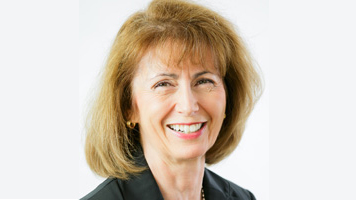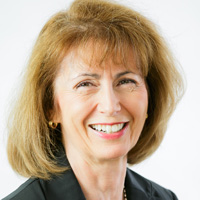Collins | Exploring The Cost Benefits Of Automated Ads


Mary Collins
In my last column, I shared some data from PwCs Workforce of the Future report, which helped to illustrate how automated solutions are allowing businesses to spend less time on manual tasks, freeing up their staff to focus more time and energy on new growth areas. And as a recent article in TVNewsCheck discussed, one of those areas is the automated spot sales business, which has reached a critical mass.
According to the article, major media buyers like IPG Mediabrands are funneling more and more of their spot business through automated buying platforms. The industry has been quick to respond to the opportunity, with as the piece points out, “nearly every station in the country” receiving and responding to RFPs generated from an automated buying platform.
The report, prepared by TVNewsCheck contributor Janet Stilson, who also is editor of MFM’s The Financial Manager (TFM) magazine, outlines the media buying community’s expectations for an end-to-end solution. They want a solution that encompasses everything from pre-buy to post-buy. When that is available, both parties will be able to overcome challenges such as billing reconciliation and make-goods, which consume staff time and delay payments.
While much of the focus has been on the buying community’s push for the industry’s adoption of automated ad solutions, there is also a pull factor. Digital publishers are finding that automating their ad selling, fulfillment, and billing processes can provide economic efficiencies similar to those media buyers are experiencing.
In an educational session at MFM’s Media Finance Focus conference in May, Jerry Miller, the head of revenue intelligence for the Americas at Google, cited research from Boston Consulting Group (BCG). The study found that Google’s Programmatic Guaranteed (PG) ads took 57% less time for publishers to set up and manage than traditional direct ads.
TFM’s Stilson asked Miller to expand on those remarks in an article he wrote for the magazine’s September-October issue. “With Programmatic Guaranteed, or other systems like it, there’s no need to create insertion orders; scan them; manually re-enter data; correct errors; generate confirmation reports; wait for decisions to be made as documents are handed from one team to the next, or chase down payments,” he explains.
Understanding Programmatic Guaranteed
Although Programmatic Guaranteed is Google’s brand name, many other ad tech firms offer something similar. “This method of transacting combines the best aspects of traditional reservation buys with the speed and efficiency of algorithmically driven decision making,” Google’s Miller observes. “It allows agencies and advertisers to purchase quality inventory from premium publishers at a fixed price, and the system then automatically optimizes ad delivery to the publication’s readers.”
Miller estimates that these solutions can eliminate as many as 40 different manual processes. As ad sales reps and collections managers can both attest, each one of these steps can represent a friction point for media buyers. The BCG study says removing them can result in a nearly 30% gain in efficiency.
By offering a more fully automated end-to-end solution, services like PG exceed the capabilities of real-time bidding and direct-reservation-based orders. “Publishers and advertisers aren’t always seeing the results they desire” in the form of click-through or conversion rates,” notes Miller. “And consumers are hardly thrilled about having irrelevant and/ or repetitive ads follow them around the Internet — hence the continued growth of ad-blocking technology.”
Financial efficiency is another benefit Miller highlights in his article. “Programmatic Guaranteed transactions are paid out on a net 30-day basis.” This means TV stations and other media providers can cut their DSO (day sales outstanding). Faster access to cash reduces borrowing while freeing both sales and credit personnel for more value-added functions.
Increasing the amount of spot inventory available for automated systems like PG can also reduce the time finance teams spend on reconciliation. As Miller points out: “Instead of handling multiple invoices for each direct deal … there’s just a single invoice and payment.”
It Takes More Than A Technology Purchase
The BCG report Miller cites points out that achieving the costs savings promised by a fully automated solution for processing media buys requires much more than buying or leasing new technology. “Those dramatic productivity gains were achieved only after publishers and agencies optimized their workflows to accommodate a programmatic system,” he warns.
In Miller’s experience, TV stations and other media providers “need to analyze both their current workflows and adopt some organizational changes.” He recommends these steps:
- Analyze current workflow costs — Consider how many people on staff touch a campaign from start to finish, and how much that is costing in aggregate.
- Calculate the time savings — How much time is spent on setting up and managing direct ads, and how can those resources be redeployed? This includes determining how a 30-day billing reconciliation could benefit the business.
- Analyze the cost considerations — Calculate the revenue share being paid to third-party platforms for these types of deals and how that offsets other benefits.
- Assess your talent mix — A typical publisher has most of its sales team focused on traditional deals, with one or two account executives focused on the programmatic market. Miller suggests, “That ratio might need to be flipped.”
- Set up business rules — After completing the analyses, it will be possible to determine which portions of the total ad inventory should be sold using programmatic transactions.
As Miller observes, a comprehensive analysis is necessary to arrive at the expected 30% improvement in operating efficiency. “Companies can achieve that level of success with programmatic services if they do a lot more than simply investing in a new ad-tech stack.”
The Outlook For Traditional Sales
Programmatic transactions won’t be used for all digital advertising. Miller cites analysis by eMarketer, which predicts programmatic ads will account for 86% of all digital ad spend in two years, reaching $66 billion by 2020. “That still leaves about $10 billion to be divided up among other sponsorships and traditional deals.”
While no one expects a major shift to advertising solutions like Guaranteed Programmatic to happen overnight, Miller closes his piece with the reminder that the increasingly competitive landscape for ad-supported video programming provides advertisers and their agencies with more choices. Preparing for the day when more of the market follows the lead of buyers like IPG Mediabrands may be a good strategic decision to ensure a station or company is considered for those dollars.
As Miller’s article in TFM demonstrates, members of MFM and BCCA, the media industry’s credit association, are following the programmatic ad space very closely. A copy of the September-October issue of the magazine will continue to be available on the MFM website for another week or so before it is moved to the “members only” section.
With the future of most media organizations tied to the future of advertising, media buying trends will also be covered at our upcoming educational events, including the 2019 MFM CFO Summit, which will be held in Fort Lauderdale, Fla., March 7-8, 2019, and Media Finance Focus 2019, MFM/BCCA’s annual conference, May 20-22, 2019, in New Orleans.
In the meantime, I encourage you to continue to let us know how we can help your station and company navigate the shoals around adopting new ways of doing business. Although media companies often compete with one another for the same revenue, there are a greater or equal number of opportunities to benefit from the collective wisdom organizations like MFM and BCCA can provide.
Mary M. Collins is president and CEO of the Media Financial Management Association and its BCCA subsidiary, the media industry’s credit association. She can be reached at [email protected] and via the association’s LinkedIn, Twitter or Facebook sites.
































Comments (0)